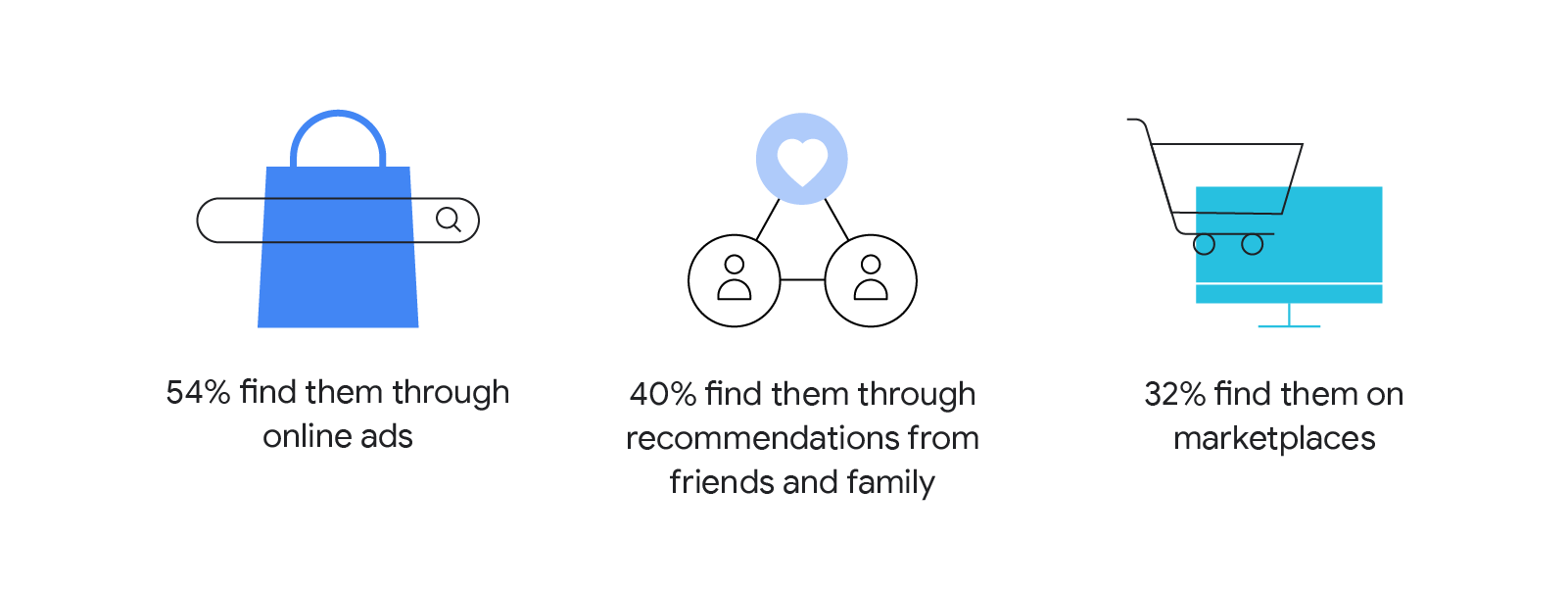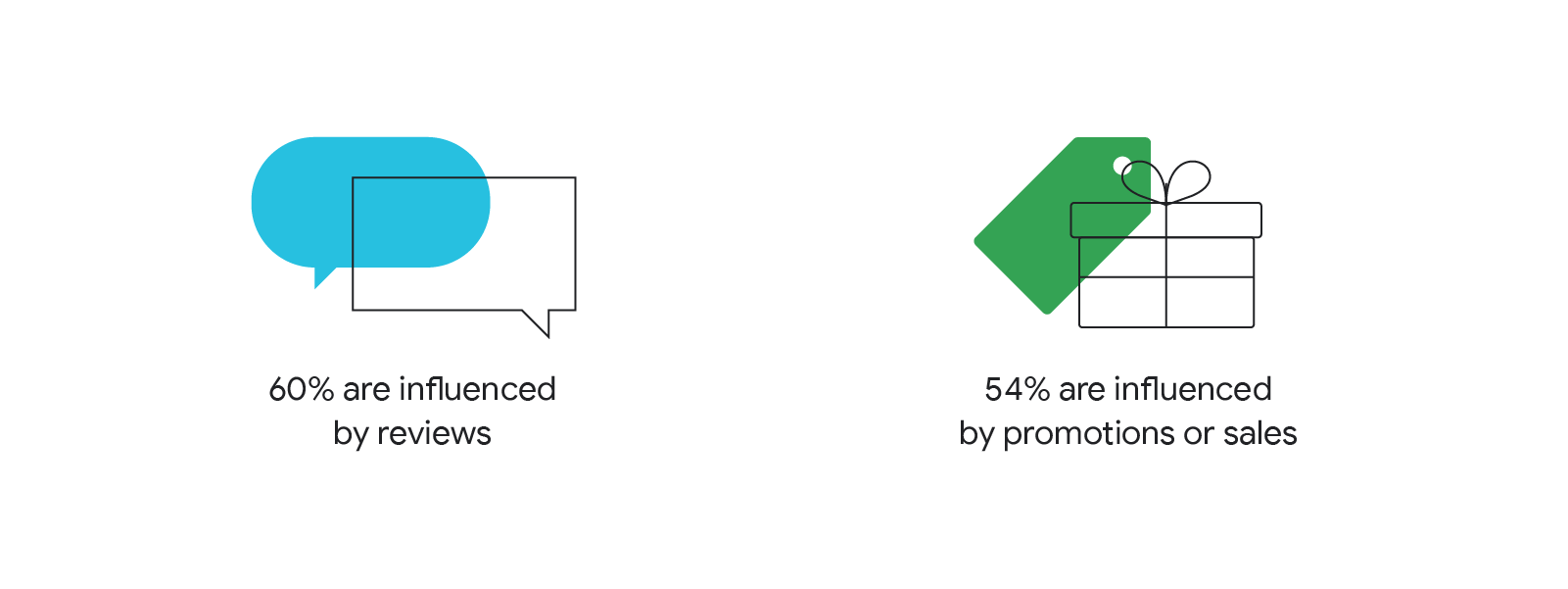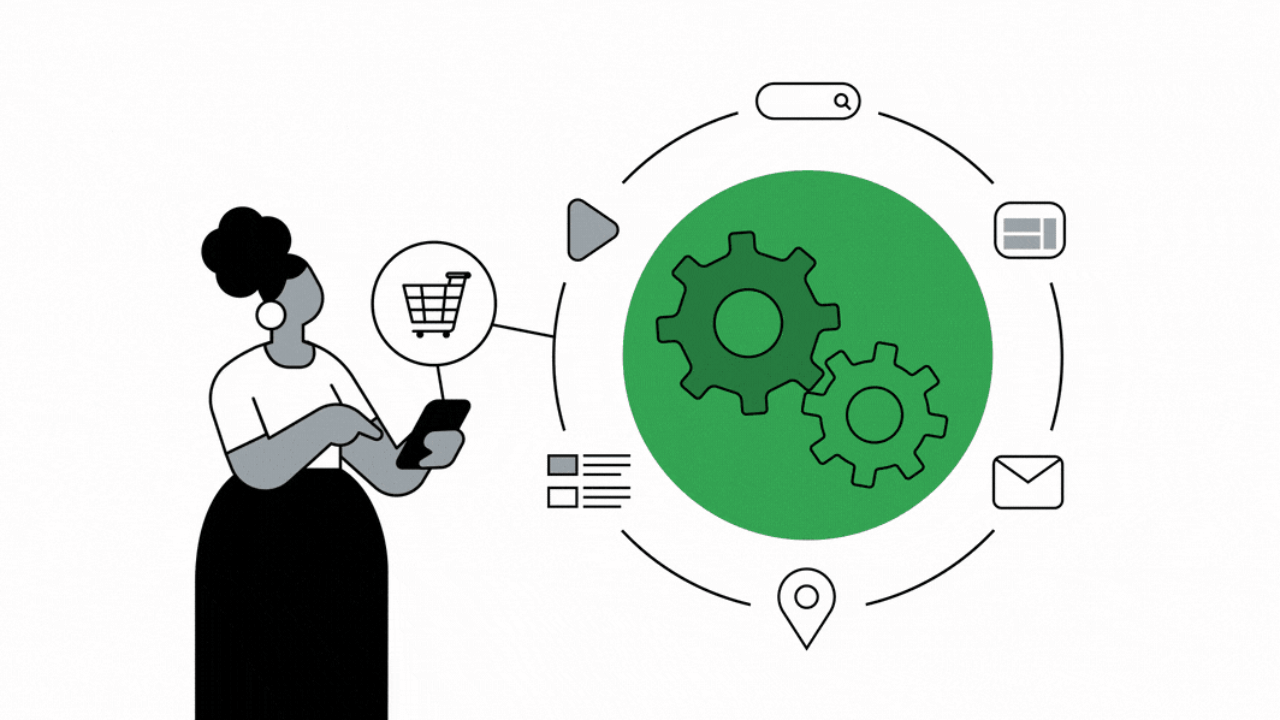Recently, Google and Reprise — IPG Mediabrands’ global performance marketing agency — sought to learn more about the online shopping preferences of people across APAC.
In the study, we set out to find the factors influencing purchase decisions, as well as the points of friction in people's online shopping journeys. The findings reveal the latest developments in e-commerce, and uncover three subtle surprises about how shoppers think.
1. Online ads have a stronger influence than personal recommendations in the discovery phase
When people are thinking of buying a new product, online ads capture their attention more than personal recommendations because those ads aid in brand recall and raise brand awareness. Interestingly, we also found that online ads are more effective across product categories that are more aspirational, such as health and beauty, home and kitchen appliances, and consumer electronics.
After online ads, people tend to seek recommendations from family and friends and marketplaces in their search for something to buy. However, once they begin researching a product, shoppers turn to brand websites, search portals, and online marketplaces for more detailed information.
How people discover new products

Since we know that people like to plan for their purchases, brands need to be present at the early discovery and research phases of the shopping journey. Awareness campaigns play an important role in nudging these shoppers in their decision-making process.
Check out our Retail Guide for more ideas.
2. Reviews on your website are just as important as reviews on marketplaces
It’s no surprise that positive reviews and high ratings influence online shopper behavior.
What causes people to click “buy”

What might be surprising to brands, however, is how consumers perceive reviews. You may think people consider marketplace reviews to be more objective, but that’s not quite how consumers see it. According to our research, consumers deem reviews on a brand’s website to be just as important as the ones found on marketplaces.
Ritika Gupta Chawla, Reprise Digital’s regional e-commerce director in APAC says “Product reviews act as a strong purchase trigger for consumers. Today, we all look for validation before making purchase decisions. We get this from reviews on marketplaces as well as brand.com sites, as both give consumers the assurance they are looking for."
Shoppers need information — and validation — to affirm their decision about their intended purchase. For brands, building their own website to host and promote customer reviews can consolidate these comments in one place that would otherwise be scattered across marketplaces. It also makes it easy for people to find reviews and leave their own. Importantly, a strong review community helps build trust and can alleviate final concerns, giving shoppers the confidence to click the “buy” button.
Check out how to build a strong direct-to-consumer strategy.
3. Online shopping’s pros vs cons: A two-edged sword for shoppers
While time and cost savings are the two benefits people value most in online shopping, shipping fees and long delivery times are the deal breakers.
In our research, respondents cite “time saving” (76%) and “best prices” (65%) as the two biggest advantages of online shopping. By contrast, they name long delivery times (55%) and shipping fees (57%) as the top two disadvantages.
Online shopping is a double-edged sword for consumers, who likely struggle with the trade-off between its cost and convenience with every online purchase. Finding better prices online is great, but the added shipping fees make purchases feel expensive. Likewise, the convenience of shopping from home makes shopping easy, but then customers must contend with long shipping times.
Brands need to be aware of this decision-making process to smooth friction points in the online shopping journey. For instance, they can offer more shipping options or tweak the price and presentation of shipping options to help customers complete their purchases.
The trade-off between time and money in online shopping

Delving deeper into the different categories, we found nuances in how customers balance cost and shipping time in their decision-making. People have a higher threshold for shipping fees on necessities such as food deliveries and pet food as well as health and beauty products. On the flip side, they have a lower threshold in their wait for electronics and kitchen appliances — products that aid everyday convenience.
Our shopper behavior research highlights the subtle distinctions in people’s online shopping decision process. To help consumers discover new products, brands can run awareness campaigns and collate reviews on their websites so it’s easier for shoppers to validate their purchase decisions. Not least, brands can play an important role in easing the trade-off that online shoppers often have to make between cost and convenience.
With these fresh insights into online shopper behavior, brands can add value to people’s online shopping journey. See what else we unearthed on the behavior of shoppers in APAC and the nuances that shape their online shopping decisions.
Contributor: Rehaan Kazmi, Regional Product Lead — Google Shopping







